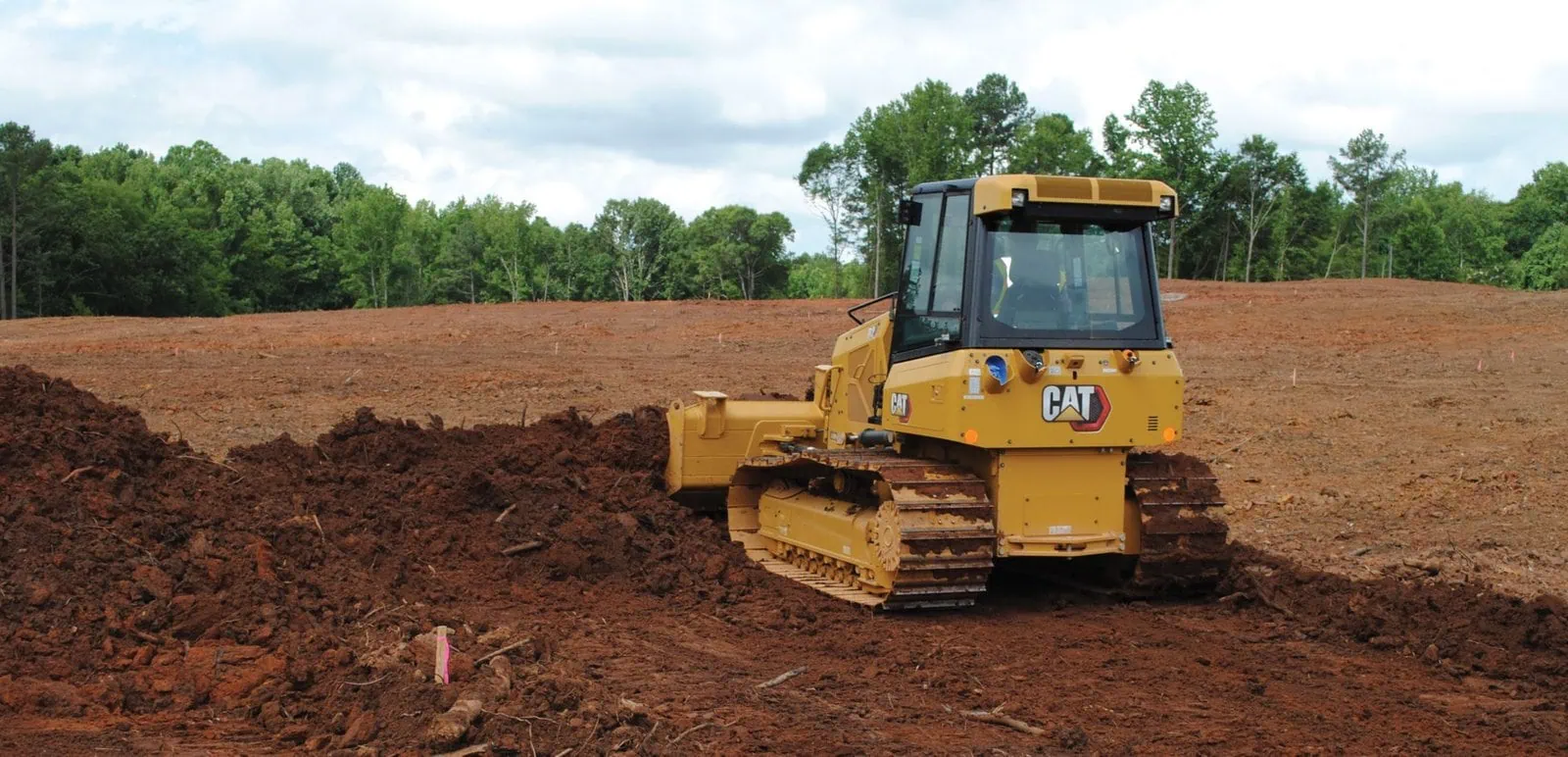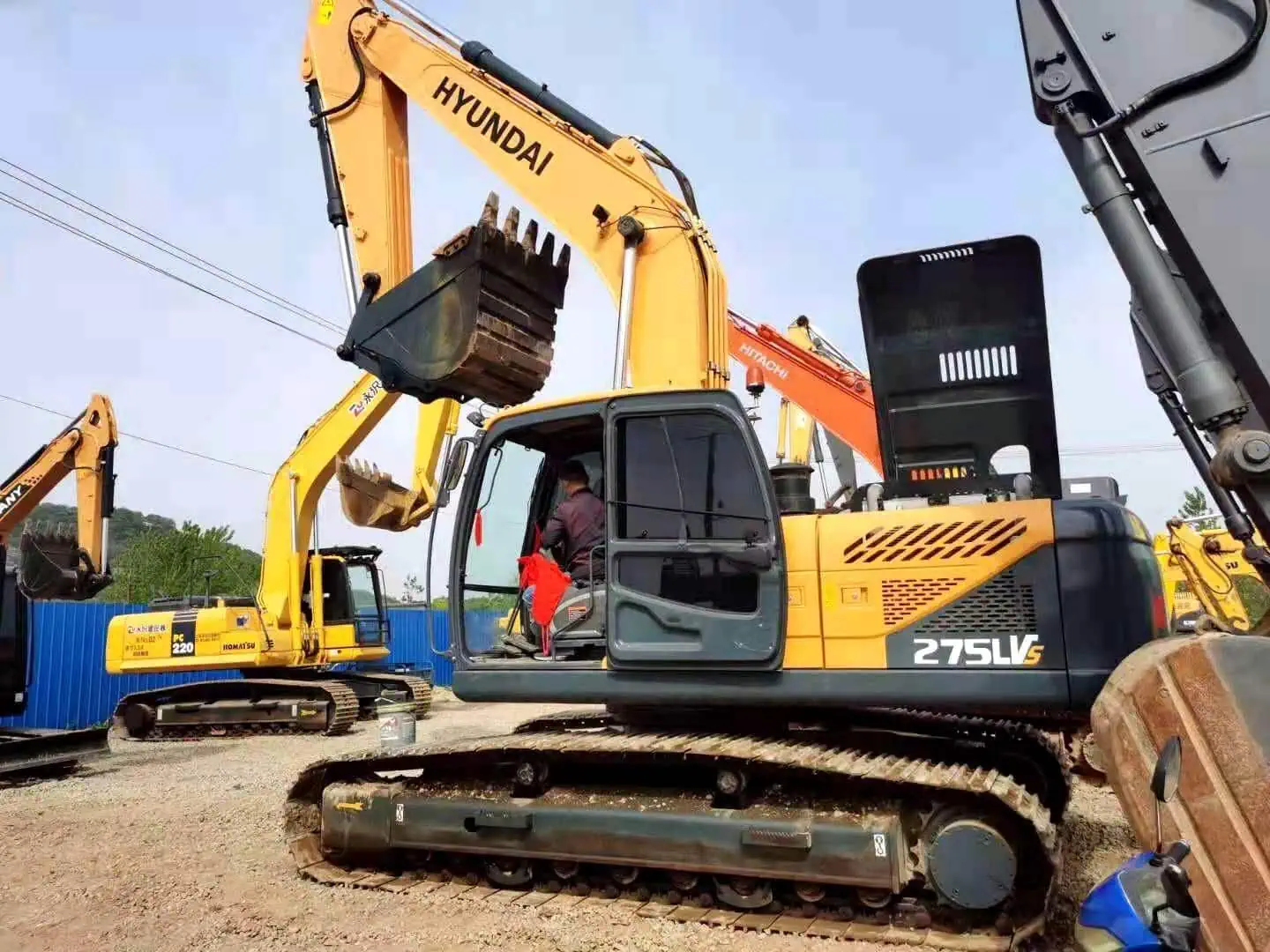needing equipment for your construction project? You should always use the right equipment for the job. The wrong machine can cost you valuable time and money and can even make it impossible to finish the job. Don’t worry. I’m going to tell you exactly what you need to know about all construction equipment names and help you with your strategy to get the right tools for your project and save yourself time and mone.
Choosing the right types of construction equipment for your project is essential to ensure efficiency, safety, and cost-effectiveness. From excavators to bulldozers, each machine serves a specific purpose and selecting the correct one based on project size, budget, and terrain is crucial. This guide will help you understand the various options and how to make an informed decision for your construction needs.
Now that you understand the importance of choosing the right equipment, let’s dive into the different types of construction equipment available for your project.

Inhaltsverzeichnis
UmschaltenWhat Are the Common Types of Construction Equipment Names?
Construction equipment is a broad term that covers a wide variety of machines used to perform various tasks on a construction site. The types of machines used in construction can be put into several general categories of construction equipment, each designed for a specific purpose. In this article, we will look at some of the most common types of construction equipment, what they do, and what types of projects they are most suited for.
Excavators
Excavators are one of the most versatile types of construction equipment, and they can be used for a wide range of tasks. They are used for digging, trenching, lifting, and demolishing structures. There are several types of
excavators, based on their design and intended use:
Mini -Bagger
These little machines are a perfect solution for your limited-space projects or for jobs in small, urban areas. They are great for digging small trenches, clearing out debris, and handling smaller loads.
Crawler Excavators
Crawler excavators are great for rough ground or uneven terrain, as they have tracks instead of wheels. The tracks provide better weight distribution and stability, making them good for moving material and digging in soft ground.
Wheeled Excavators
Wheeled excavators are more mobile than crawlers and are designed to work on flat, hard surfaces. They are commonly used for fast-moving jobs on construction sites where speed is of the essence.
Bulldozers
Bulldozers are powerful machines designed to move large quantities of material like soil, rock, or debris. They are primarily used in grading, land clearing, and excavation projects. Bulldozers have a large metal blade on the
front that can be adjusted to move different types of material. There are two common types:
Standard Bulldozers
Dozers are very universal and can do many things, like pushing dirt and debris, grading land and clearing sites. They are often used on large construction sites, such as highways or large infrastructure jobs.
Crawling Bulldozers
These bulldozers are on tracks, which make them good for rough or uneven terrain. The tracks give them better traction so they can drive around on soft ground or through the mud and things like that, which makes them
very useful out on construction sites where the ground isn’t so perfect.

Cranes
Big hoisting machine used on most large construction projects that can lift heavy loads. Everything from skyscrapers to bridges, even to some degree with industrial facilities, most of the things that get lifted that
are too big for humans to handle are lifted with cranes. There are different types of cranes for different tasks:
Tower Cranes
Used to build tall buildings and other structures. They are usually stationary and provide straight vertical lifting capacity to move materials like steel beams and concrete. They are very tall, with high reach, and are used a lot for high-rise buildings.
Mobile Cranes
Crane mounted on a truck. This is highly mobile, and it’s a very flexible solution in general. So, it’s easy to set up, tear down, and move to a different part of a job site. It is most commonly used on smaller projects or where the needs change often of where you’re lifting, or you’re moving back and forth a lot. Usually smaller projects or in infrastructure projects like bridges and roads.
Crawler Cranes
This kind of crane is also mounted on tracks. It is mounted on wide tracks that aren’t unlike the bulldozer
tracks, and it’s good for use in rough terrain. This is used in a construction site where there is no perfect, flat ground. It’s also very good for remote areas where you have to lift something heavy, but you can’t set a rig up.
Loaders
Machine used for lifting and moving big piles of stuff. Minimally, they’re used for moving dirt, gravel, and sand. Loading material into or out of a place, either into a truck or rail car. They are used to keep the job site clean and to scoop up any debris or refuse scattered around. Just like some of the other equipment, loaders come in a lot of different designs and have different uses.
Wheel Loaders
Machine used to pick stuff up and move it around; this is for moving materials over short distances. These machines move fast, are very efficient, and are used quite often. Given the name, can imagine they work best on a hard surface like asphalt because they have a hard rubber tire instead of a tractor tire, for example. Fast and have good maneuverability
Track Loaders
Same concept of picking stuff up and moving it around, but the track loaders are built to work on softer, uneven ground. They work great when the ground is very, very soft or uneven because they don’t sink into the ground. They have the same point of connection with the ground as a bulldozer, which means they can keep themselves on firmer or higher ground than something with tires.

Motor Graders
Motor graders are essential for doing fine work. Think about grading roads and getting everything all set the way you need it for the base of the road before you might come back to asphalt it or put concrete on it. The motor grader is going to do the fine work when you’re building your road or any kind of infrastructure, leveling out your land for foundations, etc.
A blade on the back of some of these machines is 25 feet long and is used for leveling the land to within an inch of level across that 25 feet before they’ll put asphalt on the ground or concrete or anything along those lines. These are the real big, heavy machines with a yellow paint job with a big blade on the back.
Standard Motor Graders
These are typically used for large-scale roadwork projects or land development projects where this type of precision grading is required.
Compact Motor Graders
Same concept as the big machine, but these are your small, little motor graders. Maybe you can’t fit the big one in there where you need to do your road work or your grading, so this is your little one you can fit in and use to do the job.
Forklifts
Forklifts are for moving things, typically on the front edge of a construction site or in a warehouse environment. They have forks on the front end, run by a chain that you can raise or lower to pick up your material. Forklifts can be used for various reasons. Here are the three most common types:
Rough Terrain Forklifts
These have larger tires, a powerful engine, and are specifically designed to handle the uneven earth conditions.
Construction sites are where you’ll typically see these used.
Industrial Forklifts
These are typically used in warehouses or on flat surfaces to move items or goods from one location to another over a short distance.
Skid Steer Loaders
The machine is an articulated or skid-steer loader with lift arms with an attached bucket and forks. These versatile machines can be used for a variety of tasks, such as digging, landscaping, and snow removal. They are compact and easy to work with, especially in confined spaces. They are available with a multitude of attachments and are used by almost every contractor in the construction industry.
Road Rollers
These are road rollers used for compacting asphalt, dirt, and other construction materials that need to be compacted to make them solid and stable before laying down further layers of asphalt or concrete. They are essential for building long-lasting roads, highways, and other infrastructure projects.
Vibratory Rollers
These are used for compacting asphalt during roadwork and construction projects.
Static Rollers
These rollers do not vibrate but provide consistent pressure to compact materials in road construction.

What Are the Different Types of Construction Equipment and Their Uses?
As previously mentioned, types of construction equipment vary depending on the task at hand. Here, we’ll dive deeper into how different machines serve specific purposes in various construction scenarios.
Excavators
Excavators are designed to dig and move earth. You can also use them to lift heavy materials, dig holes for foundations, and even knock down buildings. They are versatile machines and are used on just about every construction site.
Bulldozers
Bulldozers Bulldozers are critical for land clearing, grading, and excavation. The large blade at the front of the bulldozer is used to push materials such as dirt and rocks. They are great for flattening out uneven land or clearing a site of debris before construction begins.
Cranes
Cranes are used for lifting and moving heavy materials around construction sites. Whether you need to place steel beams into position for a skyscraper or move heavy loads while building a bridge, cranes are essential for building skyscrapers and constructing large infrastructure projects.

Loaders
Loaders are used to move large amounts of materials around a job site. Every construction site has materials that need to be moved from one place to another. Whether it’s loading dirt into trucks or moving gravel from one location to another, loaders are an incredibly versatile machine that can help speed up the job.
Motor Graders
Everybody knows about the importance of motor graders for road work, but a motor grader can also produce a flat job on land grading work where a dozer cannot. A motor grader is occasionally used to do snow work, particularly when the temperature is cold and the snow is not soft. Motor graders are used to add and take out a little bit of dirt after finish dozers are finished to get the extra few feet of dirt flat.
Forklifts
Forklifts are used to pick up and move stuff; you use them to carry things around a construction project site. They are commonly used in warehouses, and in the field, they are used to lift something up and move it a short distance to where it needs to go.
Skid Steer Loaders
A skid steer loader is used for a mini-excavator. It does a great job in tight spots around existing structures or in residential construction.
Road Rollers
Road rollers are used to pack things such as asphalt and soil. It is critical to get the surface compacted and stable. The compacted surface is particularly important in road building because the roads have to have stability.
How Do I Choose the Right Equipment for My Construction Project?
Selecting the right piece of equipment for your job is dependent on a number of factors. It comes down to outfitting your company with what you think you need based on your situations, locations, and available cash. Understanding what each piece of equipment can do is the key.Construction equipment is what makes your construction project happen. It allows people to do things that are impossible or inefficient to do by hand. Whether it’s excavating, lifting, moving material, or grading land, every piece of equipment has a job to do.
That job is to make you more productive and more efficient in getting your work done.
The choice of equipment can dramatically affect how you achieve the completion date, the safety of the project, and the money you spend. If nothing else, consider what types of construction machines to use to make sure the job runs smoothly and meets the deadline. The right equipment can be the difference between a successful, cost
effective project and a disaster plagued with missed deadlines, safety concerns, and high expenses.
Project Size
The size of your project will determine what size of equipment you use. If you are building roads or high rises, you will use larger, more powerful equipment. But, if you are building houses or landscaping a yard, you can get by with smaller, more flexible pieces of equipment like a skid steer and mini-excavator.
Budget
Select equipment that fits your dollars. Larger pieces of equipment will cost more to rent, purchase, operate, and maintain. You need to balance your desire for the extra capability of larger machines with the cost of those machines.
Terrain
The kind of equipment you use will also depend on where you are working. In rough conditions, you can’t beat the performance of a track machine such as a crawler excavator or a bulldozer. If you are working on flat, hard ground, you can work a wheeled machine all day long.
Project Timeline
If time is the limiting factor, consider how much faster and more efficient equipment X is than equipment Y at doing whatever it is you are trying to do. If you are moving material, wheel loaders should be faster or bring more material out at a time than an excavator or a skid steer. If you are picking materials and loading a truck, a wheeled excavator is going to be a lot faster than a crawler type machine.
Maintenance and Support
Before you run out and buy or rent a piece of equipment, research the availability of service centers and the cost of planned maintenance. This can add quite a bit to the operating cost of the machine. If the machine is straightforward and you can maintain and repair it yourself, you can save a bunch of money over the life of the
machine.

Abschluss
In summary, know what the equipment names are and select the right machines to do the job right. Factors to consider include the size of the project, cash availability, a rough/rocky site or hilly site, time requirements , and who is operating the equipment. As you make your decision about renting or purchasing equipment, remember to calculate all the cost like time and cold hard cash. Understanding the capabilities of different types of construction equipment will help you make the right choice for your particular job.
You can also consider second-hand construction machinery. Our company HIXEN specializes in all kinds of second-hand construction machinery and has 15 years of experience. If you are interested in second-hand construction machinery, please feel free to Kontaktieren Sie mich. I can provide you with high-quality second-hand machinery and Reasonable prices, my email is abby@hixenmachinery.com, looking forward to hearing from you.










